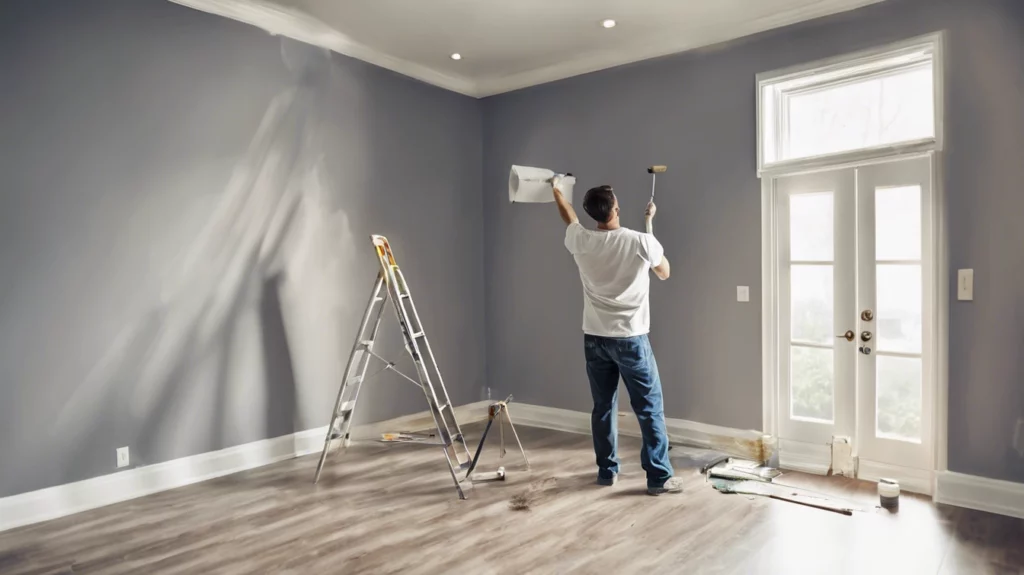A professionally applied Interior house painting Service can transform the look and feel of any space, but maintaining the vibrancy of freshly painted walls requires careful attention. Even high-quality paint can peel or fade if proper steps are not taken. From preparation to maintenance, every stage matters when it comes to protecting your investment. Here’s a detailed look at how to keep your interior walls looking as stunning as the day they were painted.
Prepare Surfaces Properly Before Painting
The foundation of a lasting paint job lies in thorough surface preparation. Skipping or rushing this stage is one of the main reasons paint peels prematurely.
-
Clean Thoroughly: Dust, grease, and grime create barriers that prevent paint from adhering. Wash walls with mild soap and water or a professional wall cleaner.
-
Repair Imperfections: Patch holes, fill cracks, and sand rough patches to create an even surface.
-
Prime Effectively: Primer creates a strong bond between the wall and the paint while sealing porous areas to prevent uneven absorption.
-
Control Moisture: Identify and fix leaks or damp spots before painting to avoid hidden moisture that causes bubbling and peeling later.
Select High-Quality Paint and Primer
Not all paints are created equal. High-quality paints and primers contain better pigments and binding agents, which directly influence durability.
-
Opt for paints specifically formulated for interior walls to resist everyday wear and tear.
-
Use a primer matched to the paint type (oil-based or latex) to enhance adhesion.
-
Look for UV-resistant properties if your interior receives significant sunlight exposure.
Maintain Optimal Painting Conditions
The environment during application affects how paint bonds to the surface.
-
Temperature and Humidity: Ideal conditions usually fall between 10°C and 30°C with low humidity. Extreme temperatures or dampness can hinder proper curing.
-
Proper Ventilation: Good airflow helps paint dry evenly and prevents trapping moisture.
-
Multiple Thin Coats: Two or more thin coats create a stronger, more flexible paint film than one heavy coat.
Protect Painted Walls from Sunlight and Moisture
Fading often occurs due to excessive exposure to ultraviolet (UV) rays, while moisture accelerates peeling.
-
Install blinds, curtains, or UV-protective window films in sun-exposed rooms.
-
Use dehumidifiers in areas with high humidity, such as bathrooms or basements.
-
Address leaks or condensation immediately to prevent water infiltration behind the paint.
Regular Cleaning and Gentle Maintenance
Even after the paint has dried, how you care for it determines its longevity.
-
Dust walls periodically using a soft microfiber cloth or duster.
-
Clean smudges and stains with a damp sponge and mild detergent. Avoid harsh scrubbing that can break down paint layers.
-
Touch up minor scratches promptly to prevent larger sections of paint from loosening.
Control Indoor Humidity Levels
Fluctuating humidity causes walls to expand and contract, stressing the paint film.
-
Maintain indoor humidity between 40% and 50% to reduce moisture-related damage.
-
Use exhaust fans in kitchens and bathrooms to remove excess steam.
-
Seal gaps around windows and doors to prevent moisture infiltration.
Use the Right Finishes for Each Room
The type of paint finish impacts resistance to wear and fading.
-
Matte or Flat: Ideal for low-traffic areas but more prone to scuffs and harder to clean.
-
Eggshell or Satin: Better for living rooms and hallways with moderate traffic.
-
Semi-Gloss or Gloss: Perfect for kitchens, bathrooms, and trim where moisture resistance and easy cleaning are important.
Matching the right finish to the room’s function protects against premature wear and discoloration.
Schedule Periodic Inspections
Early detection of potential problems can prevent costly repairs.
-
Check for small cracks or peeling spots at least twice a year.
-
Address water stains or signs of dampness quickly to stop the spread of damage.
-
Repaint areas that experience heavy use or frequent cleaning when the finish starts to dull.
Avoid Common Mistakes
A few missteps can undo the best painting efforts:
-
Applying paint on damp or dirty surfaces.
-
Using cheap brushes or rollers that cause streaking and poor coverage.
-
Ignoring the recommended drying time between coats.
-
Choosing low-quality paint to cut costs—this often leads to faster fading and peeling.
Invest in Professional Expertise
While DIY painting might seem cost-effective, experienced professionals bring precision and knowledge that ensures long-lasting results. They understand how to prepare surfaces, select appropriate materials, and apply paint in a way that withstands daily stress and environmental factors.
Why Choose Fitch Painting?
Fitch Painting delivers exceptional craftsmanship and a commitment to durability in every project. By focusing on meticulous preparation, premium materials, and proven application techniques, our team ensures your interior walls remain vibrant and resilient for years. Choosing Fitch Painting means you invest in superior quality and a flawless finish that resists peeling and fading long after the job is complete.

